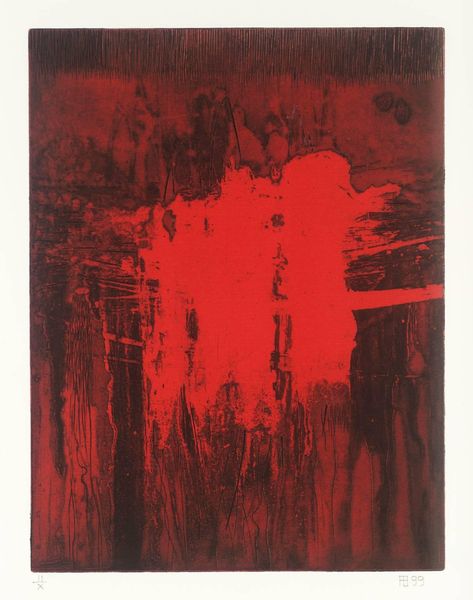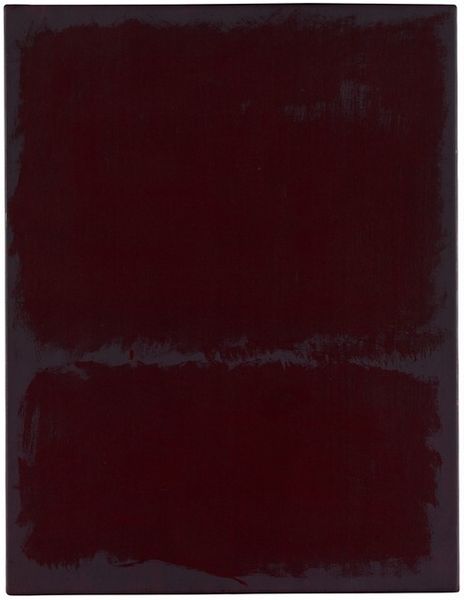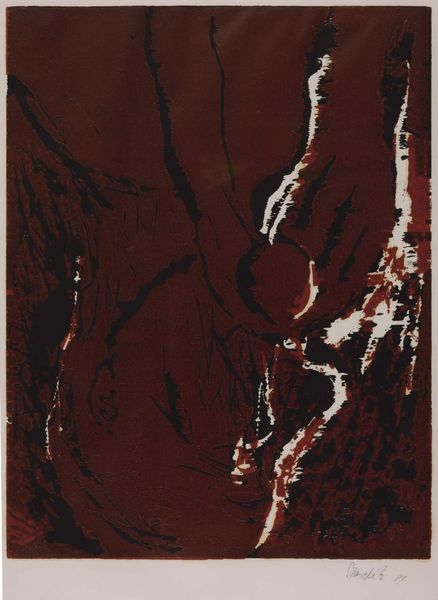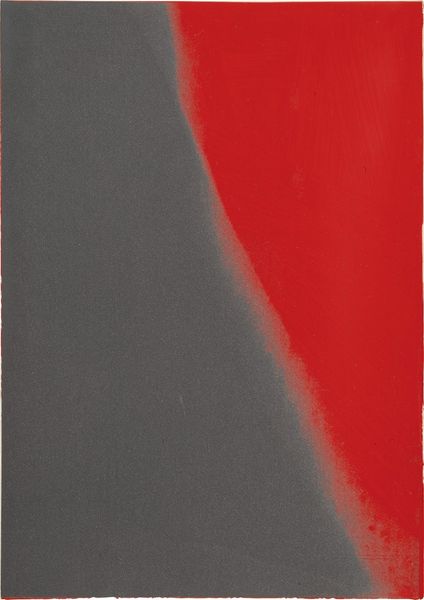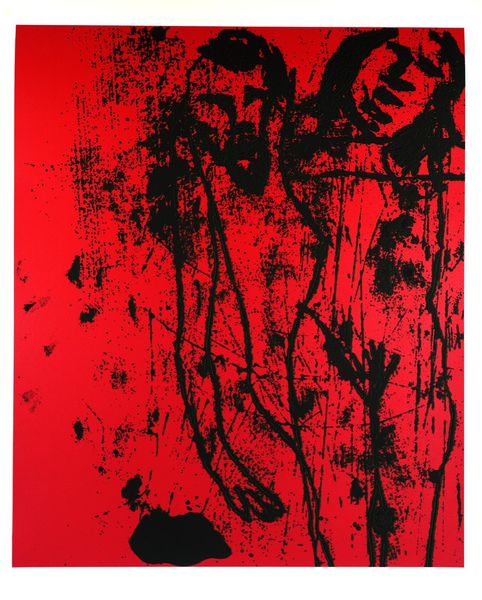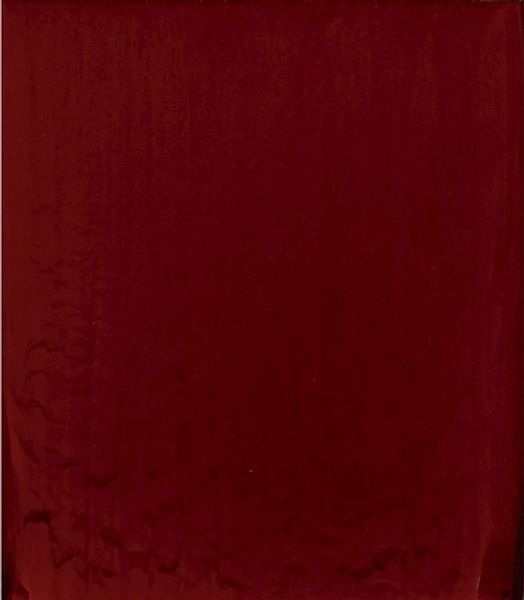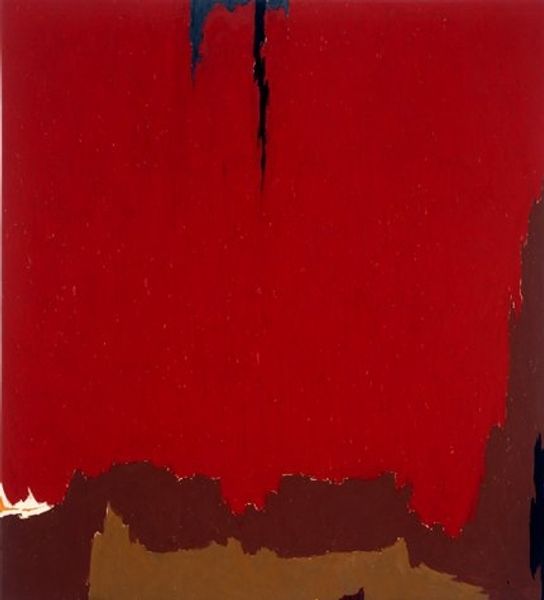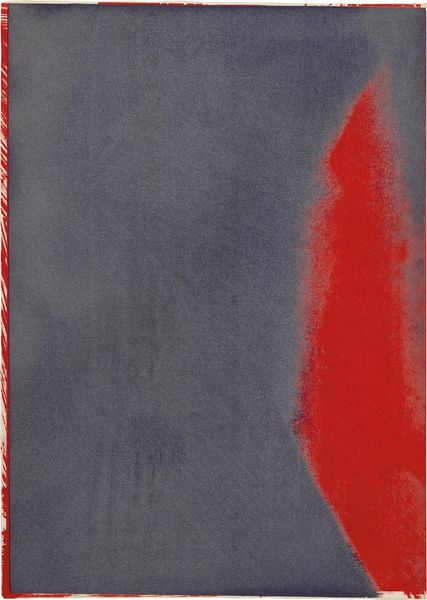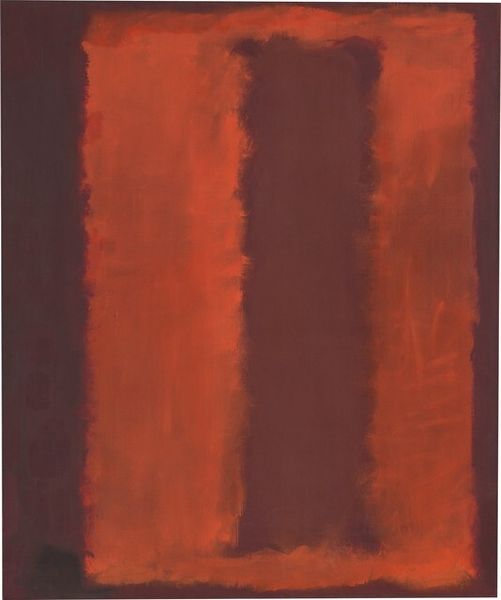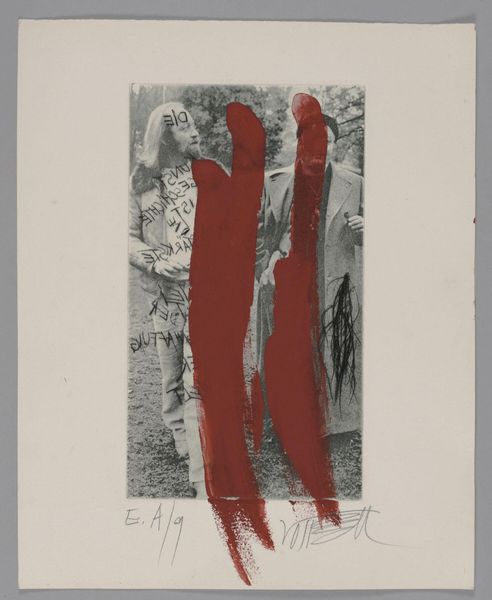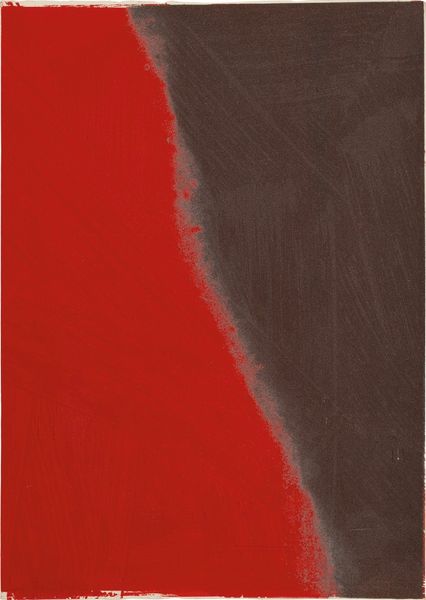
Dimensions: support: 1048 x 806 mm frame: 1225 x 986 x 95 mm
Copyright: © DACS, 2014 | CC-BY-NC-ND 4.0 DEED, Photo: Tate
Curator: Hermann Nitsch's "Poured Painting," currently housed at the Tate, presents a visceral encounter. The dimensions are roughly 105 x 81 cm. Editor: It's immediately striking – the raw, almost violent application of red. The drips create a sense of urgency. Curator: Indeed. Nitsch's process is paramount. The act of pouring challenges traditional notions of artistic control and intentionality. The color itself evokes strong symbolic associations. Editor: I'm thinking of blood, sacrifice... the raw materials used must have been quite specific to achieve this consistency and tone. What type of paint was employed, and where was the canvas sourced? Curator: The canvas’s coarse texture plays a vital role in how the paint interacts with the surface. We see the dialectic between control and chance. Editor: Thinking about the labor involved... the physicality of Nitsch's process seems to be key here. It forces one to consider the relationship between the artist's body and the artwork itself. Curator: Precisely. The painting functions as a testament to the artist's physical and conceptual engagement. Editor: A provocative piece. Now I understand how material and action come together to challenge our understanding of making.
Comments
Join the conversation
Join millions of artists and users on Artera today and experience the ultimate creative platform.
tate 6 months ago
⋮
Poured Painting was made by aggressively throwing and pouring bright red paint directly from the tin onto a large rectangular piece of sacking fixed to the wall, evoking associations of splattered and dripping blood. Nitsch made other paintings in the series by pouring paint onto the floor, or by rolling his body in it. He often used red paint and blood in his performances, which were highly ritualistic and often violent, invoking extreme emotional and psychological states. Gallery label, July 2008


